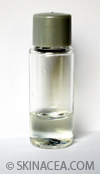Mandelic Acid Peels
Information about mandelic acid peels and what they do |

Mandelic acid peels are a type of alpha hydroxy (AHA) peel, similar to glycolic acid and lactic acid peels. Because mandelic acid molecules are larger than both that of glycolic and lactic acid, mandelic peels are less penetrating and irritating, but still very effective for treating damaged skin.
Mandelic acid peels are a great choice for a first-time chemical peel. Their antibacterial qualities also make them good for people with acne-prone skin. Because it is one of the gentler chemical peels out there, it is safe to use for people with Rosacea or darker skin tones.
Let's explore how mandelic acid peels can make your skin better without excessive irritation and what you should expect when you get one of these chemical peels.
What do Mandelic Acid Peels Do?
Depending on the strength of the peel (usually 25%) and how many times you get it done, mandelic acid peels help:
- Exfoliate the surface of your skin
- Even out skin tone
- Fade dark dark marks
- Suppress skin pigmentation
- Treat inflammatory non-cystic acne
- Treat stubborn blackheads
- Rejuvenate photoaged skin
- Repair sun damage
- Improve the appearance of fine lines
Mandelic acid peels will improve your skin faster than using a daily AHA treatment. They tend to be more helpful than other chemical peels in treating acne, particularly blackheads that don't respond to anything else. They are also effective treatments for people with sensitive skin and have not been known to cause any depigmentation.
What to Expect from a Mandelic Acid Peel
Before the mandelic acid peel solution is put on your skin, your skin must be cleansed and primed. A prep solution will most likely to applied to your skin to remove any surface facial oils. After this prep solution dries, the peel will be applied to your skin.
Because mandelic acid is less penetrating, it will take longer for you to feel any topical sensations. You might wonder if the peel is actually doing anything, but after awhile, your skin should start feeling warm and turn a bit pink. The peel solution will only be left on your skin for a few minutes. Exactly how long will depend on what the person giving you the peel decides and how well your skin naturally tolerates the acid.
Most chemical peels will neutralize on their own after a few minutes, but a neutralizing solution may be applied on your skin just in case. Some people find that the neutralizing solution actually stings more than the peel itself. The peel is then removed with some water or a light cleanser.
After the peel, your skin will be pink and sensitive. Mandelic acid peels generally don't cause skin to physically peel off (it does for some people though), but you still have to take good care of your skin post-peel in order for it to properly heal. This means not using any scrubs, exfoliants, or harsh active treatments. It also means wearing a strong sunscreen to protect your skin from the sun.
Is there any downtime?
Because mandelic acid peels are so mild, there is very little downtime associated with the peel. Your skin may be pink, dry, and flaky in some places, but overall, the side effects from mandelic peels are easily covered up with makeup. Your skin will probably heal in 2-3 days, so you probably won't have to schedule time off work or clear your calendar. However, it's still a good idea to get mandelic acid peels done on a weekend in case anything goes wrong.
If you get mandelic acid peels for acne, you might experience some post-peel purging. As the acid exfoliates away the surface of your skin, it brings clogs you have underneath closer to the top, which may erupt as active pimples. However, the redness and irritation side effects from the peel will go away in 2-3 days.
When will you see results?
Like with all chemical peels, mandelic acid peels take time to work. If you are using mandelic acid for fading pigmentation, your skin tone won't be completely evened out by the next day. If you are using mandelic acid peels to treat acne, don't expect clear skin when you wake up tomorrow either. Similarly, mandelic acid peels cannot erase fine lines and wrinkles in 24 hours. Even though your skin improvements may not be immediate or even that noticeable, your skin does continue to get better as the days go on.
Keep in mind that fixing some skin problems will take multiple mandelic acid peels. This can be anywhere from 3 to 6 or more, depending on the severity of the skin damage. For instance, for mild-moderate acne that responds well to mandelic acid, you can expect to see some results after the third peel.
You can get mandelic acid peels every 2-3 weeks, but some people can tolerate getting them once a week. It all depends on your skin and how it responds to the treatment.
Overall, mandelic acid peels are a great way to make your skin better without making it irritated!
Last updated: September 21, 2012
Related articles:
- How to Use Chemical Peels at Home
- Facial Procedures: TCA Peels
- My Glycolic Acid Peel Experience
- Product Recommendations: Healing Products
- My Before and After Acne Pictures
